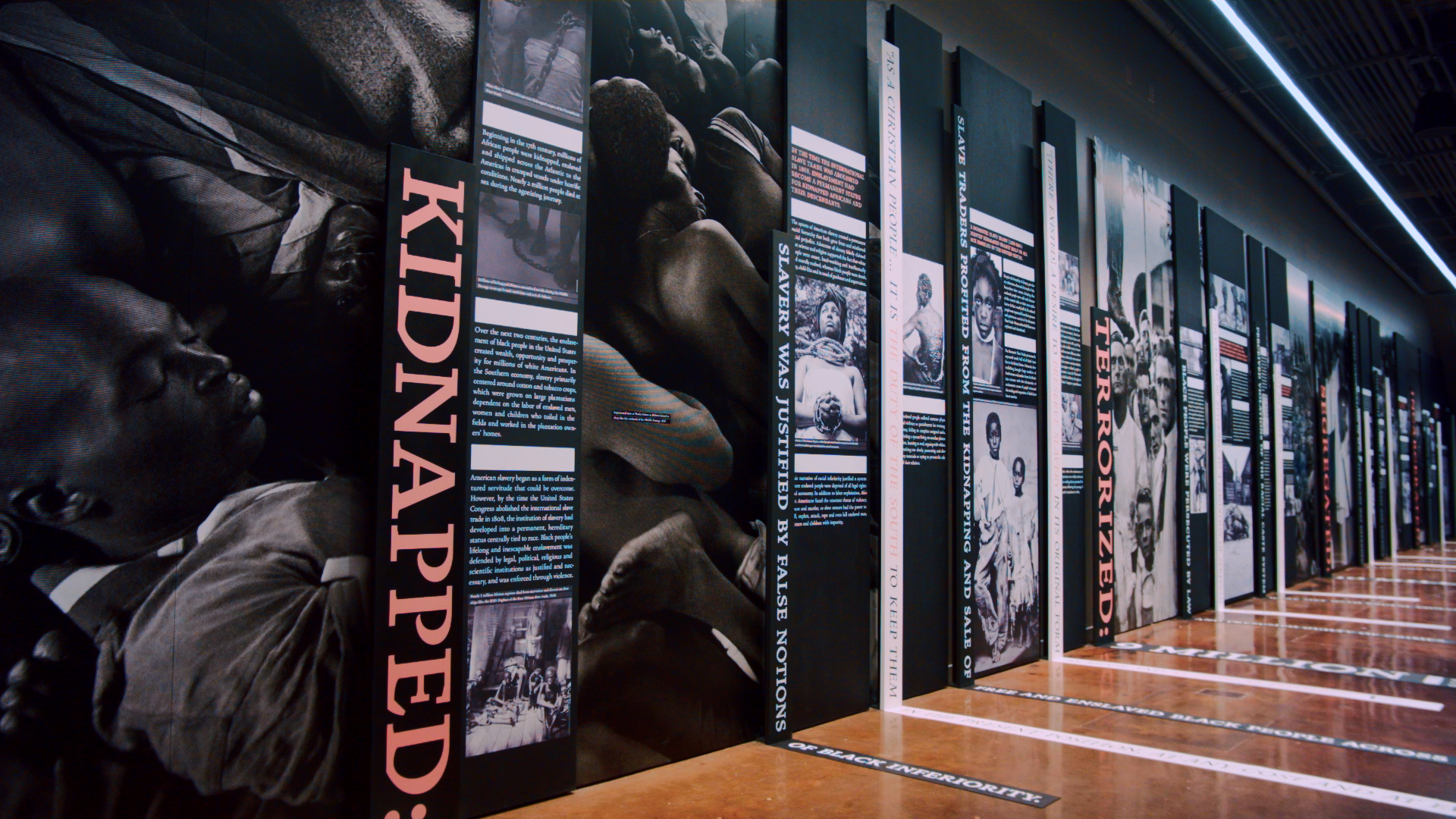The Legacy Museum: From Enslavement to Mass Incarceration is a museum in Montgomery , Alabama, that addresses the history of racial inequality and injustice in the United States. The museum follows American history through periods of enslavement, racial terrorism , legalized segregation (separation of different races), and mass incarceration (imprisonment).

The museum presents the idea that slavery in the United States did not end, but rather evolved. A belief that black people were inferior to white people found new expression in such acts of terror as lynching , in segregation laws, and in unequal treatment by the criminal justice system . Lynching means the killing, often by hanging, of a person by a mob outside the law. From 1877 to 1950, more than 4,400 African Americans were killed in racial terror lynchings. These lynchings were not responses to crimes, but rather a means of suppressing (keeping down) African Americans. Some victims were accused of overstepping social boundaries based on race. Others were accused of crimes and killed without a trial.
The Legacy Museum occupies the site of a former warehouse where enslaved people were held. Nearby is the site of a historic market where enslaved people were auctioned, as well as a river dock and train station through which they were transported. By the late 1800’s, Montgomery was one of the most prominent cities in the U.S. slave trade.
The 11,000-square-foot (1,022-square-meter) museum uses firsthand accounts, historical documents, videos, works of art, and interactive and other exhibits to trace the history of racial injustice in the United States. Exhibits include replicas of pens where enslaved people were held before auction, and a multimedia exhibit where one can “visit” with representations of real people who were imprisoned and hear their stories of mistreatment. One wall displays hundreds of jars of soil collected from lynching sites across the nation. 
The Legacy Museum was created by the Equal Justice Initiative (EJI), a nonprofit legal rights organization, “to advance truth and reconciliation around race in America.” It is closely associated with the nearby National Memorial for Peace and Justice . Also created by the EJI, the memorial honors thousands of African Americans who were lynched from the late 1800’s through the mid-1900’s. The museum and memorial both opened to the public on April 26, 2018.
